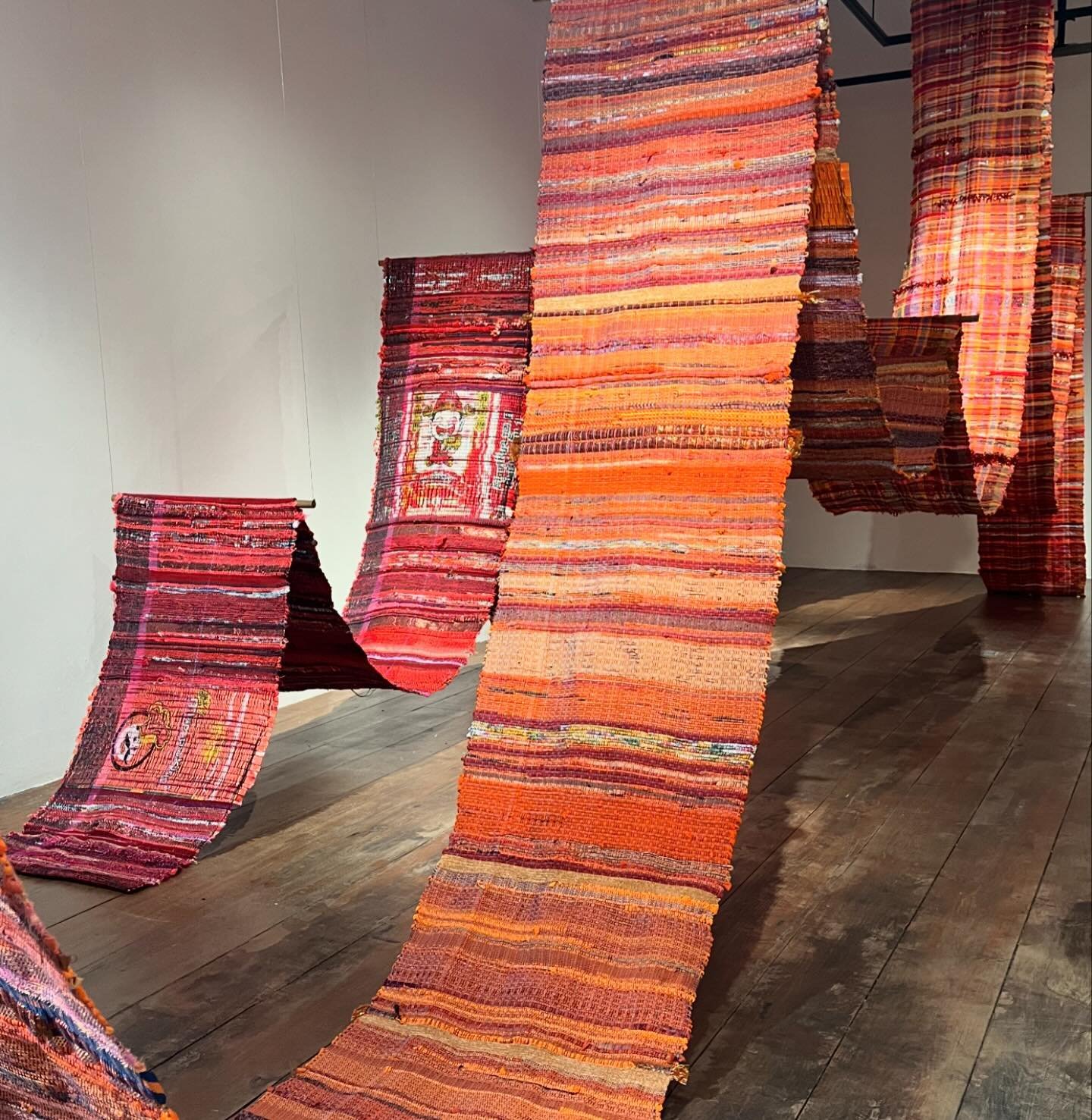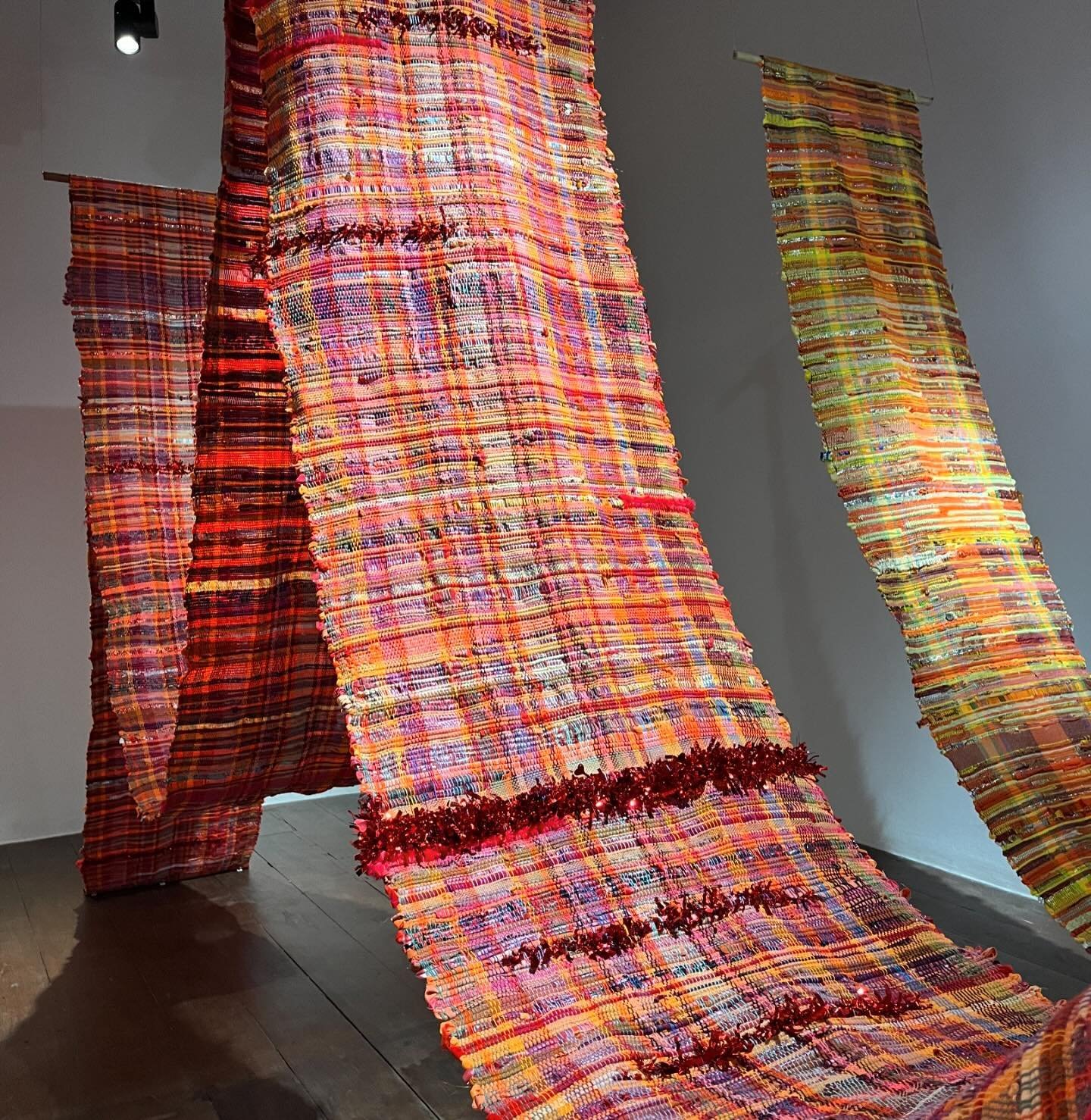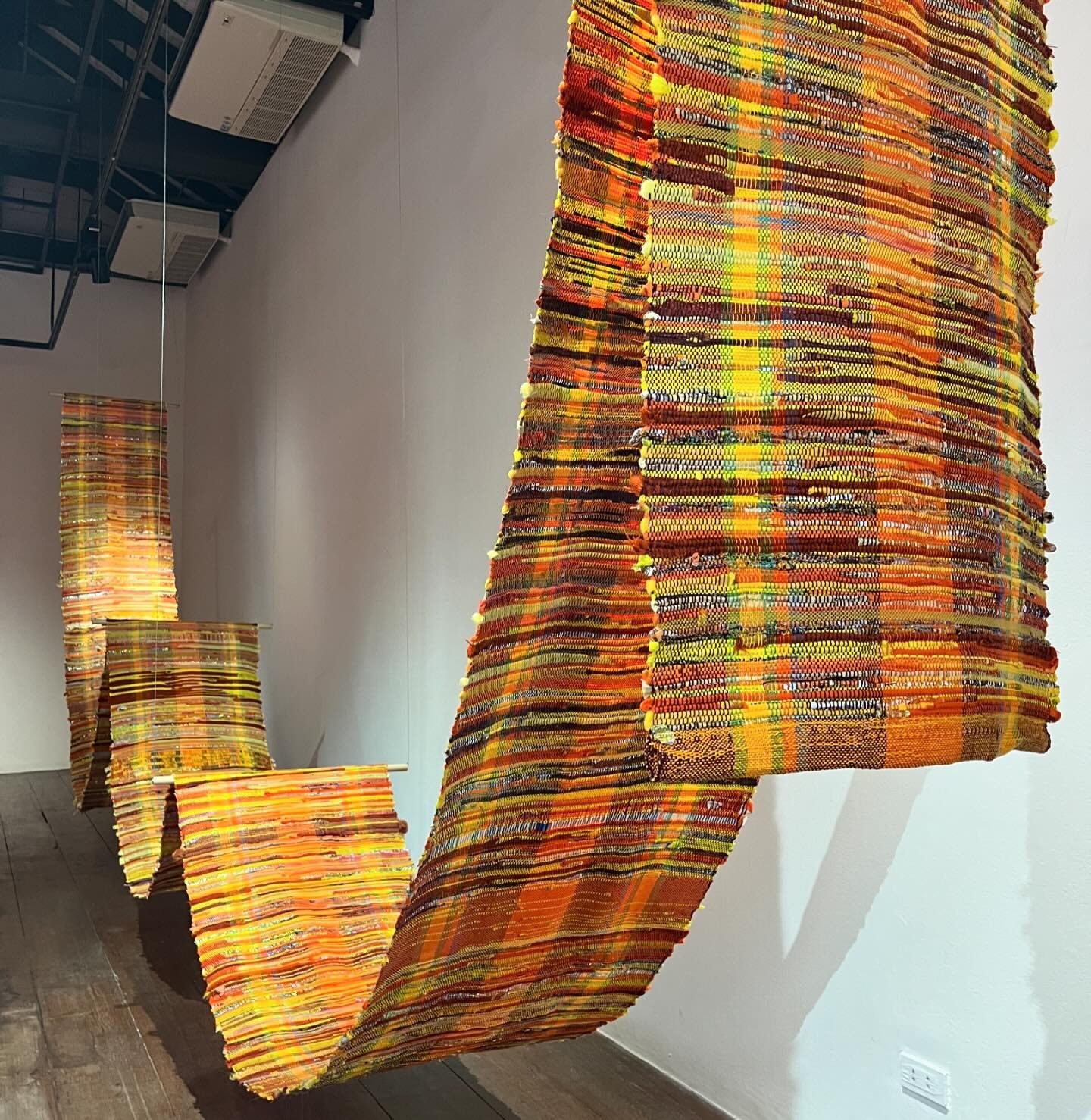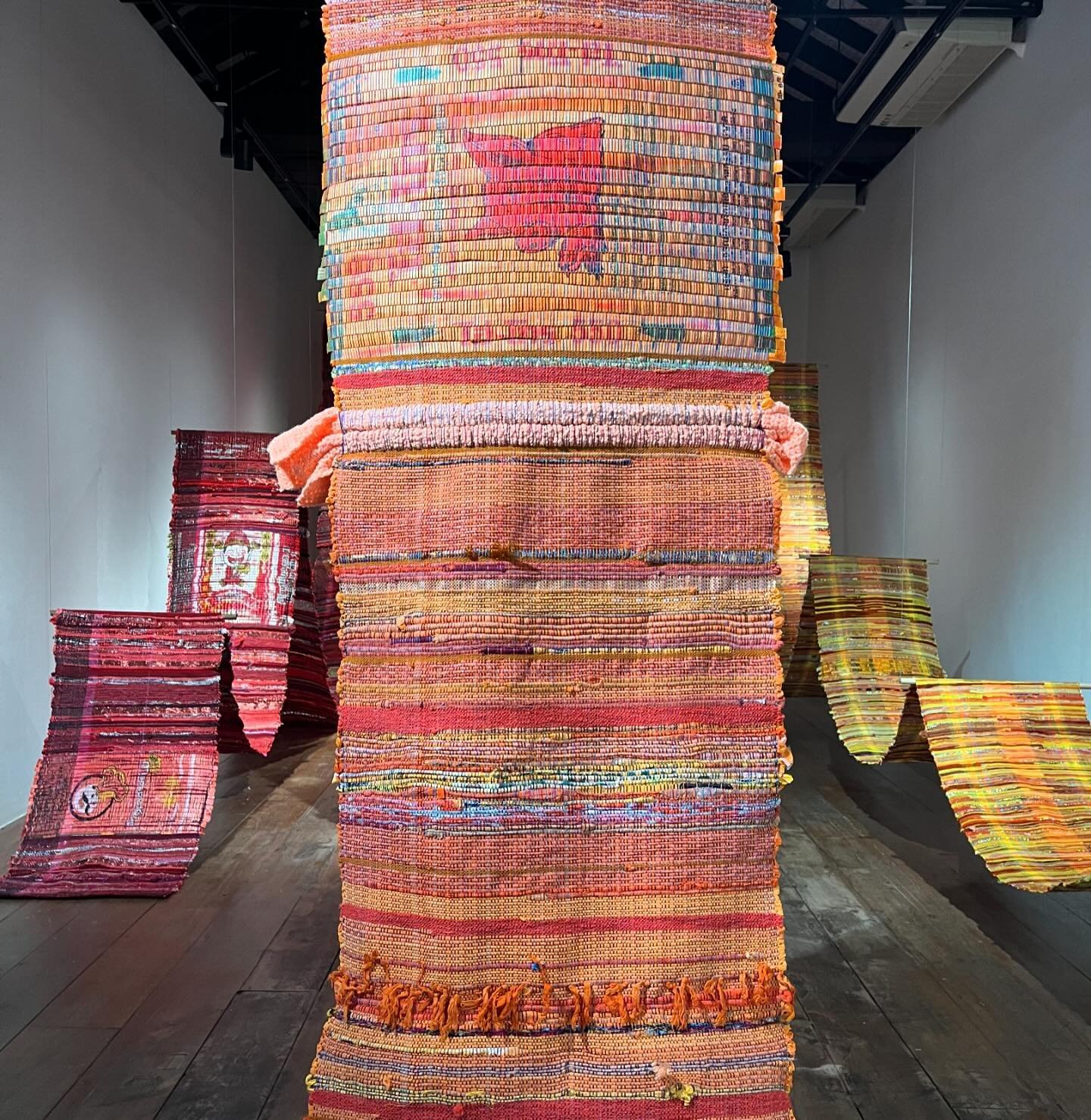threads of
change
media: weavings made from plastic bags, produce bags, grocery bags, shopping bags, food and product wrappers, cables, fabric scraps, clothing, balloons, life preservers, animal feed bags, fertilizer bags, housewares, masks and gloves, cotton warp
location: warin lab contemporary, bangkok, thailand
year: 2024
The artistic practice of Kelsey Merreck Wagner aims principally on addressing the issue of plastic pollution, consumption, capitalism, and human impact on environment. Plastic pollution has reached a staggering level, with over 380 million tons produced annually and approximately 500 billion plastic bags used worldwide each year. Astonishingly, more than one million bags are consumed every minute, each with an average “working life” of just 15 minutes. This exponential increase in plastic production over the last decade has far exceeded that of the entire previous century.
Wagner’s art is shaped by the implementation of recomposing used plastics. As plastics has become increasingly indispensable for humans, spanning from household products, sports gear, and medical equipment to the automotive and construction industries. Plastics are lauded for their durability, versatility in challenging conditions, and cost-effectiveness in manufacturing. In comparison to alternative materials such as glass or metal, plastics are more malleable and require less energy to produce, making them ideal for mass production, which began after the Second World War.
Since the advent of synthetic plastics in the late 1800s, they have supplanted natural materials that were scarcer and more costly to process. With abundant supplies of various plastics, manufacturers can keep pace with rapidly increasing consumption demand while also maintaining economical production costs. Moreover, the adaptability of plastics has allowed countless blueprints to materialize into reality. They have taken on different shapes and forms, finding their way into our daily lives. However, since their emergence, every fragment of plastic still persists on Earth, taking centuries, and thus generations, to decompose.
The textile work by Kelsey Merreck Wagner for the “Threads of Change” exhibition seeks to address the issue further. As an artist deeply engaged with the urgent discourse surrounding climate change, Wagner’s work delves into the visceral experience of environmental transformation through a prism of fiery hues – reds, oranges, and yellows. These colors, reminiscent of flames, are not merely aesthetic choices but symbolic representations of the escalating crisis we face.
In this collection, Wagner has employed heat maps as a central motif, a visual language that articulates the notable heat radiating from our warming planet. These maps serve as both a tool for comprehension and a call to action, urging viewers to confront the evident realities of climate change.
Furthermore, this exhibition confronts the tangible impacts of climate change, notably the perilous levels of PM 2.5 particles produced by fires and dust. By highlighting these dangers, Wagner seeks to foster dialogue on the urgent need for environmental supervision and sustainable practices.
Curatorial Essay by Suphavinee Srisopon




media coverage
bangkok post: https://www.bangkokpost.com/life/social-and-lifestyle/2776302/weaving-a-greener-future